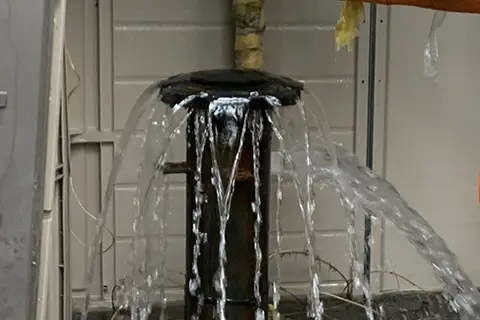How to remove iron from drinking water
The presence of iron in ground water is a direct result of its natural existence in underground rock formation; here's how to treat borehole water to remove it.
Private water supply boreholes
With the ever rising costs of mains water, many people are turning to private water boreholes for their household and commercial water supply. A private water well is certainly a more cost effective solution.
The good news is, most of the time the water is of good quality and, being chlorine-free, pleasant to taste. However, it is always critical to conduct a full chemical and bacteriological analysis of borehole water before using it - and where necessary, to filter and purify it.
As with all engineering challenges, there is much to be gained through careful design when it comes to your borehole. For example, we design boreholes to deliver good quality water in the most hydraulically efficient and cost-effective way.
In simple terms this means your borehole will be constructed correctly to minimise any surface water ingress that will affect the quality of the water.
Water treatment for your borehole water
Treatment of private water supplies can be required sometimes, and problems may not always be rectified by what may seem the most obvious solution. Suitable equipment will vary according to levels of contaminants present, and the amount of water used.
The presence of iron in ground water is a direct result of its natural existence in underground rock formations and precipitation water that infiltrates through these formations.
As the water moves through the rocks some of the iron dissolves and accumulates in aquifers which serve as a source for ground water.
So once your borehole has been completed we recommend that you obtain a water quality test report for your supply, which will help identify any issues that are essential to deal with and those you may wish to improve.
How to remove iron from drinking water
Catalytic oxidation is a tried and tested method of both oxidising the iron to form a precipitate and then holding on to it until it is automatically back-washed to a drain.
Filox can be used for iron removal by catalytic oxidation. It is a robust media allowing a faster service flow rate than other iron removal media. A pH of 7 is recommended for iron removal. It is a heavy media requiring a strong backwash.
Adding other media is possible but can impair its service flow rate.
How does it work?
Water flows into the valve at the top, down through the media and then up through the ‘riser’ tube in the middle of the vessel. As the water travels through the media the iron is oxidised bringing the metals out of solution and trapping them so only clean clear water flows out to service.
These systems also act as sediment filters trapping any natural turbidity. As the media act as a catalyst they do not need to be topped up or replaced on a regular basis.
There are timer options that can be set to automatically self-clean (backwash) and wash away any of the accumulated iron and manganese. The Filox filter requires dissolved oxygen in the water to oxidise the metals. This normally is present naturally but can be added.
Contact us to discuss how we can improve the quality of the water you're drinking and using - or to discuss how a new borehole could save you significants amount of money on your water bill.
Other articles of interest

How we capped an artesian well from 4,600 miles away
In October 2021, an artesian water well on land in Lilliwaup, Washington USA was damaged due to a condition known as water hammer or surge flow. The water hammer effect occurs when flowrates change – it can cause high pressure, high force or even a reversal of flow.

3 remarkable reasons why Igne’s client is rewilding hillside in the heart of Wales
Igne's client Geraint Hughes is re-wilding 66 acres of Wales; we're supplying the water for this environmentally critical site.


